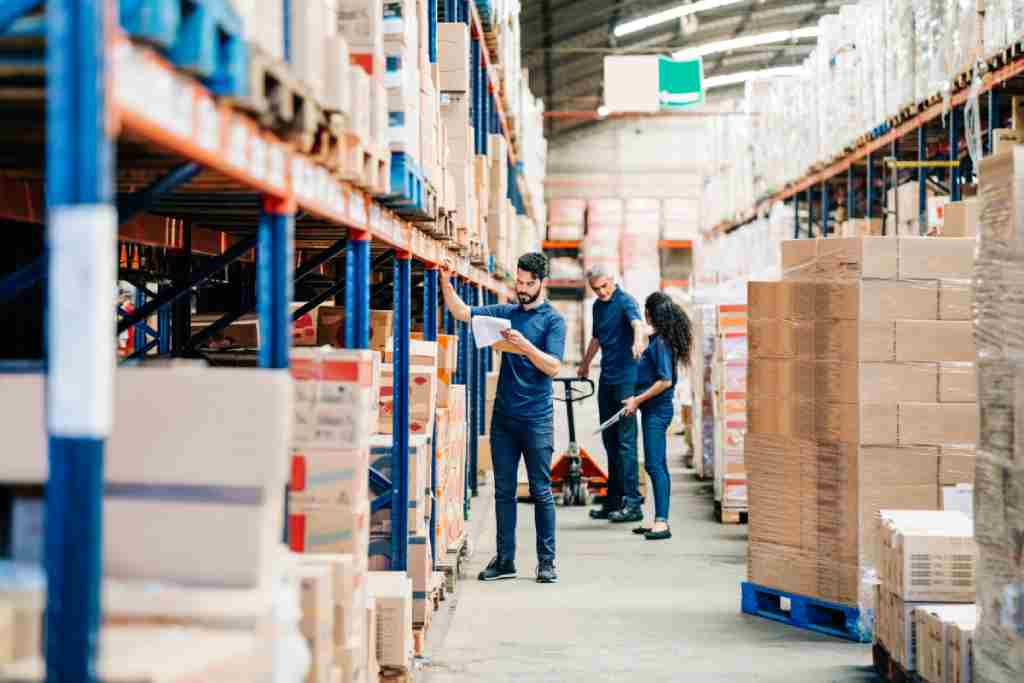
Are you an eCommerce business owner drowning in logistics?
If so, Amazon FBA warehousing could be the perfect solution.
With Amazon FBA warehousing, you can offload the burden of managing inventory and shipping from your own warehouse to Amazon’s fulfillment centers.
This can free up time and resources for you to focus on growing your business.
Amazon FBA warehousing provides several benefits that make it an attractive option for businesses of any size, but it’s not without its drawbacks.
In this post, we’ll go over:
- What Amazon FBA warehousing is
- The benefits of fulfilling your products through Amazon
- Some considerations before you dive in
Let’s get started.
What is warehousing for Amazon FBA?
Amazon FBA (Fulfillment by Amazon) warehousing is a service offered by Amazon that stores and ships your products directly to customers.
Instead of managing and storing inventory yourself, Amazon handles the entire process for you.
Using an Amazon FBA warehouse can help reduce the costs associated with running your eCommerce business, as it eliminates expenses such as packaging and shipping costs.
You can also take advantage of Amazon’s expansive network of warehouses, which can reduce your overall time to market for products.
Additionally, Amazon FBA warehousing can help improve the customer experience by providing faster delivery times, better tracking capabilities, and greater product selection.
For online businesses that rely on the Amazon marketplace, having an FBA warehouse can be an invaluable asset.
Benefits of using Amazon FBA warehousing
Let’s dive a little deeper into the specific ways using Amazon FBA warehousing may help your eCommerce business:
1: Increased reach
It’s no secret that Amazon is the undisputed champion of eCommerce.
And although Walmart is catching up with its home delivery and grocery pickup services, Amazon is still the go-to for many shoppers.
If you’ve been in this business before, you know that audience building for eCommerce is hard. Really hard.
Starting from zero is discouraging, especially in a highly-competitive niche.
Amazon essentially has the audience built-in. And it’s a very large audience.
Research shows that one in three Americans have an Amazon Prime membership, and they spend at least $1,000 per year on Amazon.
With an FBA warehouse, you can tap into Amazon’s network of buyers, giving you the potential to reach a larger audience than if you were just selling on your own website.
Plus, Amazon has a global audience, granting access to international markets with ease.
2: Improved shipping speed
Two-day shipping has been the standard for the past five years or so.
But now, in 2023 and beyond, Amazon has been spoiling us with same-day shipping. And customers’ expectations are rising to meet this incredible standard.
To help with this, Amazon offers FBA Prime, which gives customers faster shipping options than non-Prime orders.
This means that if your products are stored in an Amazon FBA warehouse, they can be shipped out quickly, giving your business an edge over non-Amazon competitors.
Plus, Amazon’s warehouses are strategically located around the world, so your inventory can be allocated to the places where it reaches the most customers in the shortest amount of time.
3: Increased customer satisfaction
Having an Amazon FBA warehouse means that orders can be fulfilled quickly and accurately.
This leads to increased customer satisfaction and more positive reviews, which can help increase sales.
Plus, when customers receive their orders quickly and accurately, they are likely to return for future purchases.
Another huge benefit is that Amazon FBA will handle all your returns and refunds, so you don’t have to worry about dealing with them.
Overall, Amazon FBA warehousing is an invaluable asset for eCommerce businesses, as it can significantly increase your reach, shipping speed, and customer satisfaction.
4: Improved customer experience and conversion rate optimization
“Where should my checkout button be?”
“How should I size these photos on my product pages?”
“What color should the elements on my page be to capture buyers’ attention?”
These are all questions we take for granted when building out our own eCommerce website from the ground up.
Thankfully, all of these customer experience questions are done for you when you use Amazon.
The checkout process is optimized and the website design is tested to bring customers from page view to purchase.
Not only that, but Amazon also offers a slew of features that make the customer experience more convenient such as gift options, secure payments, one-click ordering, and reviews.
Granted, you don’t need to use Amazon as a selling channel when you sign up for FBA warehousing — but it’s a great opportunity to leverage the years of customer experience optimization that Amazon has perfected.
5: Outsourced logistics means you’re saving time
Let’s face it, running an eCommerce business is hard.
We think it’s one of the most challenging business models to succeed in, frankly.
But those who persevere have the potential for high rewards.
You’re responsible for everything from marketing to customer service, and you don’t have the time or resources to do it all yourself.
If you’re finding yourself in that tricky position where you’re not quite ready to rent out a warehouse and hire workers, but you’re drowning in logistics, Amazon FBA may be perfect for you.
When you outsource your warehousing and shipping to Amazon, you free up valuable time and resources so that you can focus on the other aspects of running your business.
Overall, Amazon FBA offers a cost-effective way to make sure that your products reach the right customers, at the right time.
It’s an invaluable service for any eCommerce business looking to expand and grow its customer base.
By taking advantage of Amazon FBA warehousing and shipping services, you can increase your sales, improve customer satisfaction, optimize conversion rates, and free up your time and resources.
But like all things in life, there are drawbacks.
Let’s take a look at those now.
Drawbacks of using Amazon FBA warehousing
1. Cost
Amazon’s FBA services come with a cost, and these costs can add up quickly if you have multiple products or large inventory levels.
As of the time of this writing, the fee structures for Amazon FBA are as follows:
- Fulfillment Fees – Vary depending on the size and weight of your products
- Storage Fees – Charged per cubic foot and vary based on seasonality
- Returns Processing Fee – $0.50 per item returned, plus any applicable disposal fees
For the most up-to-date pricing information, check out Amazon’s FBA pricing page.
2. Loss of control
When you outsource your warehousing to Amazon, you are ceding some degree of control over your business.
Some of you are saying, “Wait, you call this a drawback? I’m drowning here!”
For others of you, maintaining total control of every aspect of your business is a point of pride (or perhaps something you need to work through).
Either way, it’s important to understand that when you use FBA, you are working with a third-party provider and relying on them for your warehousing needs.
There are certain rules and regulations you must submit to when utilizing Amazon FBA, including their return policy, shipping policies, and product safety regulations.
It’s important to research them carefully before making a decision about using Amazon FBA for your warehouse needs.
3. Quantity restrictions
Amazon FBA has certain restrictions on the number of items you can store in their warehouses.
These limits may also vary depending on the size, weight, and type of product that you’re selling.
It’s important to understand these restrictions before making a decision about using Amazon FBA for your warehousing needs.
This could cause issues if your product line grows quickly or you suddenly have a huge surge in demand.
In this case, you may need to look into alternative warehousing options such as renting your own warehouse space and employees.
What to consider before going all-in on Amazon FBA warehousing
Before you make a decision about using Amazon FBA for your warehousing needs, there are some important things to consider.
First and foremost, you need to consider what type of product(s) you’ll be selling and the associated costs of warehousing it with FBA.
This includes things like the size and weight of your products, how often you’ll need to restock inventory, and any storage or returns processing fees.
You should also consider whether or not you are comfortable with ceding some degree of control over your business when using a third-party provider such as Amazon for warehousing.
Finally, you should research the quantity restrictions associated with FBA and make sure it is a viable option for your business in the long run.
In conclusion, Amazon FBA can be an invaluable service for eCommerce businesses of all sizes looking to expand their customer base.
However, it’s important to weigh the pros and cons carefully before making a decision about using Amazon FBA for your warehousing needs.
By researching the associated costs, understanding the restrictions, and weighing the potential benefits of outsourcing your warehousing needs to Amazon FBA, you can make an informed decision that’s best for your business.
Next steps
If you’ve done your due diligence and you’re convinced Amazon FBA is the right way to go, the next step is to sign up and set up your storefront.
To go deeper on the topic of FBA or third-party fulfillment, be sure to check these related posts:
- Amazon FBA vs. 3PL – Which is Right for your Business?
- How to Sell on Amazon without Inventory
- Walmart WFS vs. Amazon FBA: Comparing the Pros and Cons of Each
Thanks for reading, and good luck!

